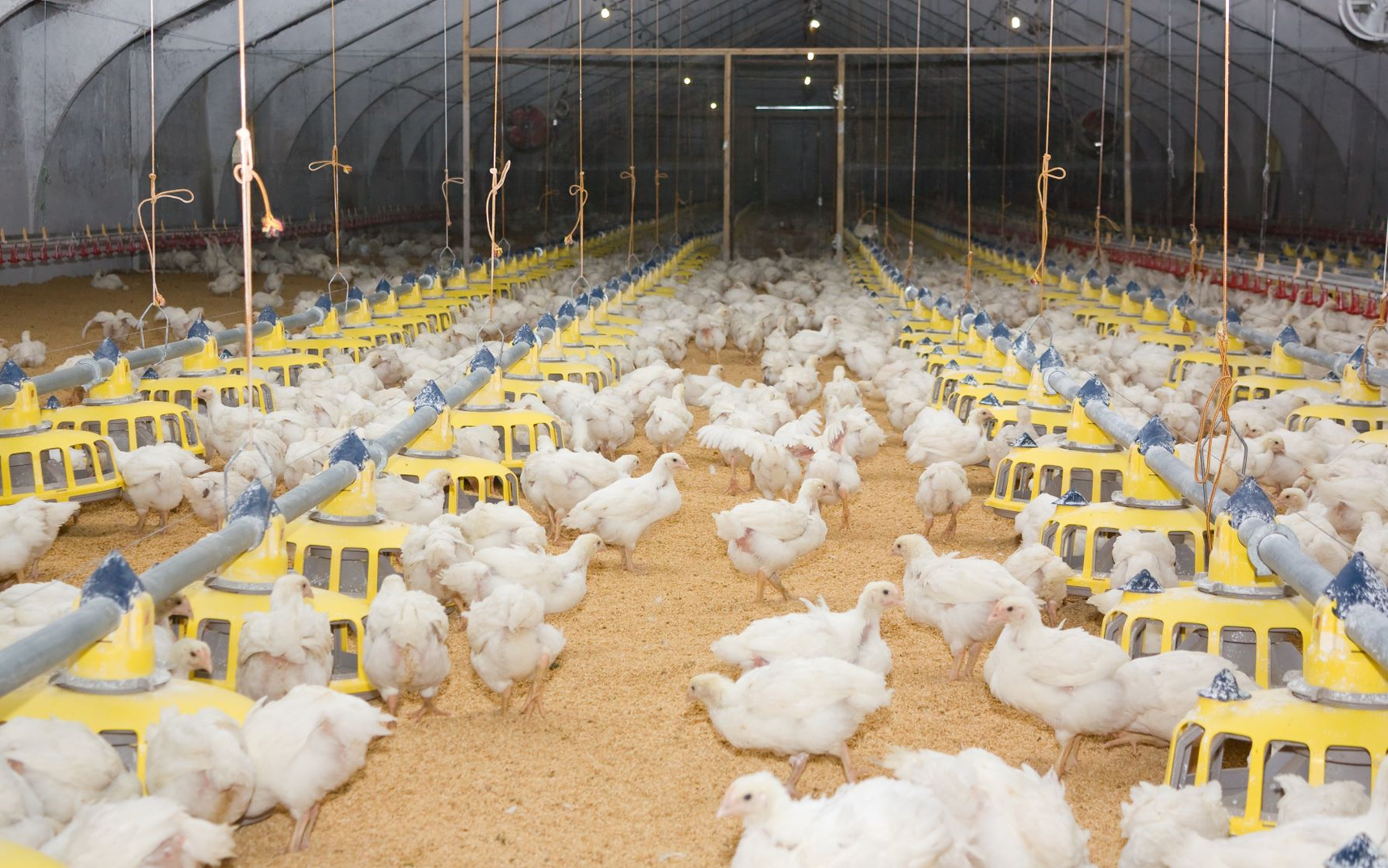Wet litter in meat chicken sheds can have adverse effects on animal welfare, flock health, food safety, the environment and productivity (Dunlop, 2017). Wet litter exhibits reduced friability and is susceptible to compression and cohesion. It has reduced thermal insulation properties when compared with dry litter and is prone to manure caking (see Caking and litter conditioning).
One of the primary health, welfare and productivity issues in meat chicken production is foot pad dermatitis (FPD) or ‘foot-burn’. Although there are multiple causes that lead to this condition in meat chickens, the primary catalyst is wet litter (Shepherd & Fairchild, 2010) and high ammonia concentrations (Dunlop et al., 2016). This can lead to productivity losses through downgrades at processing plants and is becoming increasingly important from a welfare perspective (Shepherd & Fairchild, 2010). Food safety risks may also increase with wet litter, as it provides more favourable conditions for enteric pathogens such as Salmonella and E. coli to multiple (De Rezende et al., 2001).
High moisture content in wet litter will generally contribute to more odour emissions compared with dry litter, as more moisture supports a higher level of odour-forming microbial activity. However, this is not always the case, as odour molecules also require a mechanism to move from the litter into the air and be emitted via the ventilation system. Thus, litter that has become very wet on the surface and has caked will inhibit this transport pathway (Dunlop, 2017). The issue with wet litter is that when it is combined with surface caking, it can lead to anaerobic conditions. These conditions are known to produce strong and unpleasant-smelling odorants when released and emitted. These odorants have a greater chance of causing off-site impacts and complaints.
Wet litter can affect meat chicken health, welfare and productivity, as well as human health. It can also generate excessive odour and ammonia emissions. Investment of time and resources in good litter management and addressing the issues that contribute to wet litter will enhance operations and productivity at a farm and industry level.
Regular turning and mixing aerate the litter and help keep it in a friable state. This in turn allows the chickens to work the litter by scratching and digging, which further helps maintain friability and remove moisture when combined with adequate ventilation. Maintaining friability is believed to maximise evaporation of water from litter. This is achieved by increasing the surface area for evaporation, opening pathways and pores in the litter for water to escape, and by continually bringing damp particles of litter to the surface, at which point they will dry quicker when combined with airspeed and low relative humidity. Evaporating water from litter may be challenging if there are unfavourable climatic conditions (e.g. prolonged cold and wet weather) that slow drying through ventilation. Once litter becomes wet and caked, it can be difficult to rectify without mechanical litter conditioning.
Keeping litter in a friable state allows chickens to turn the litter over via scratching and digging, which helps remove moisture when combined with adequate ventilation. Attempts to remediate overly wet and caked litter via conditioning and mixing alone are likely to be futile.


